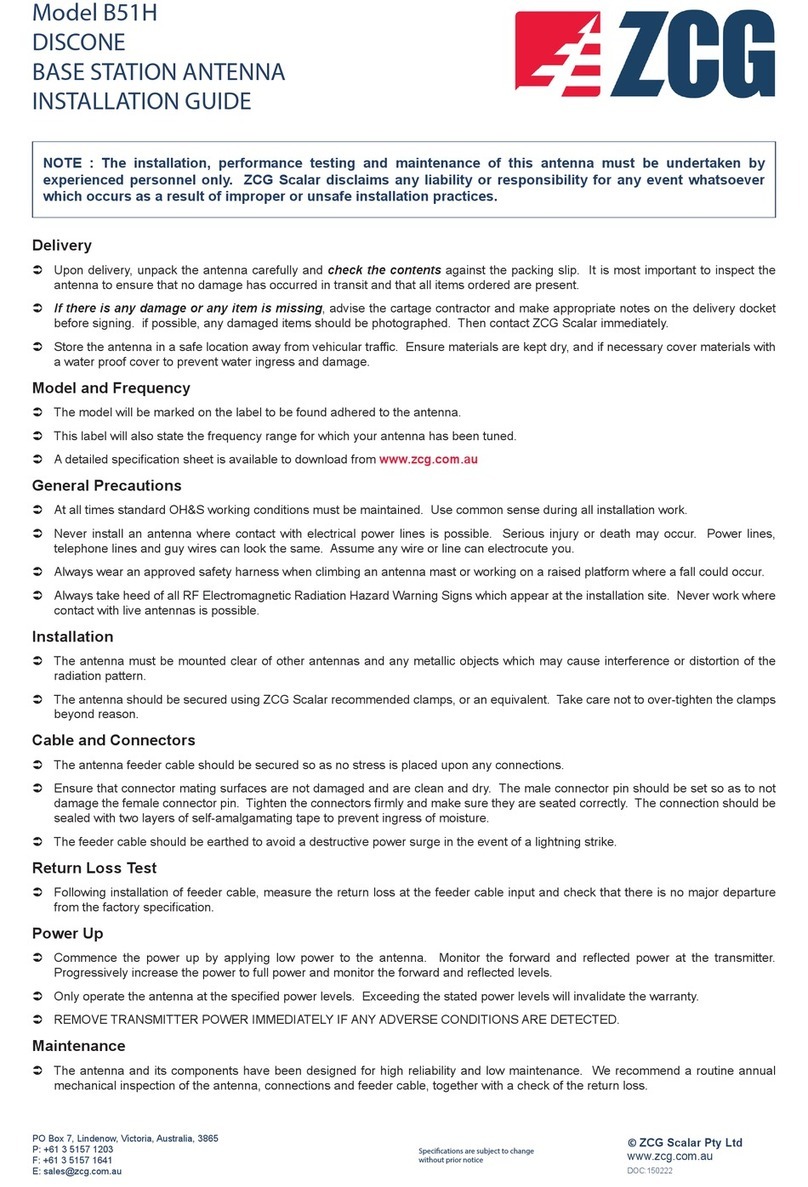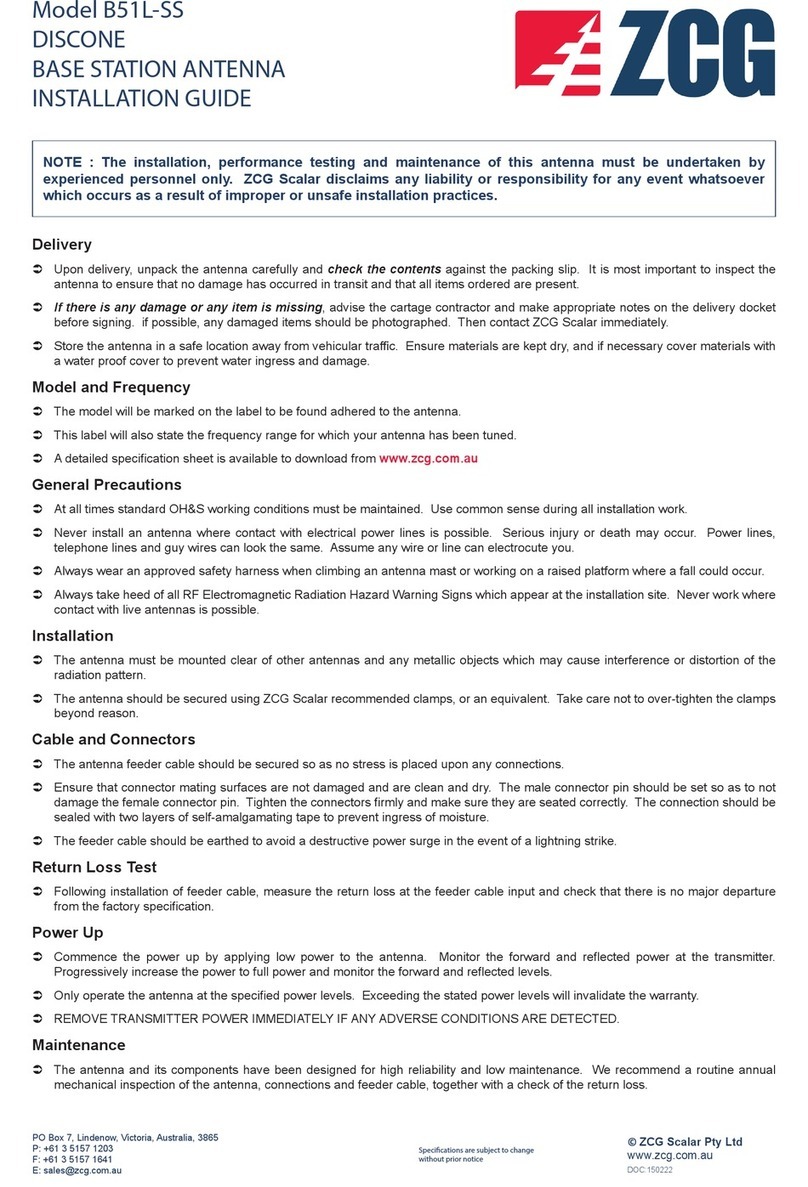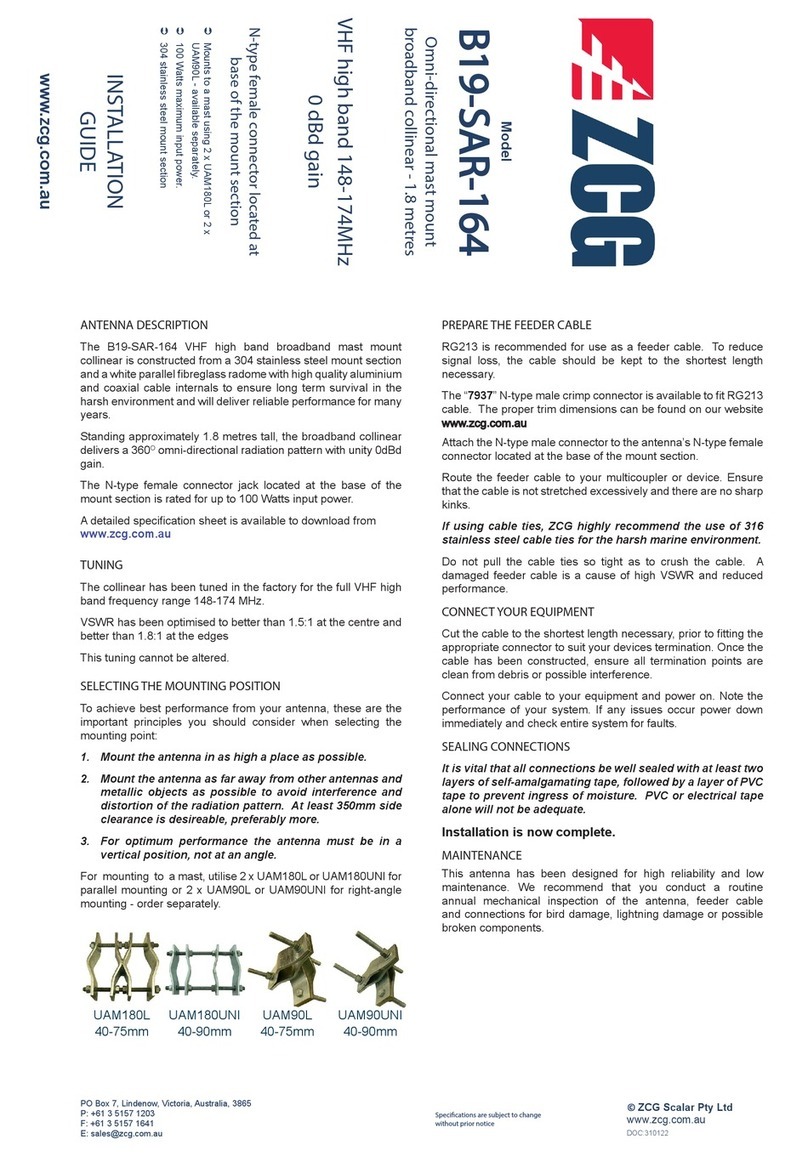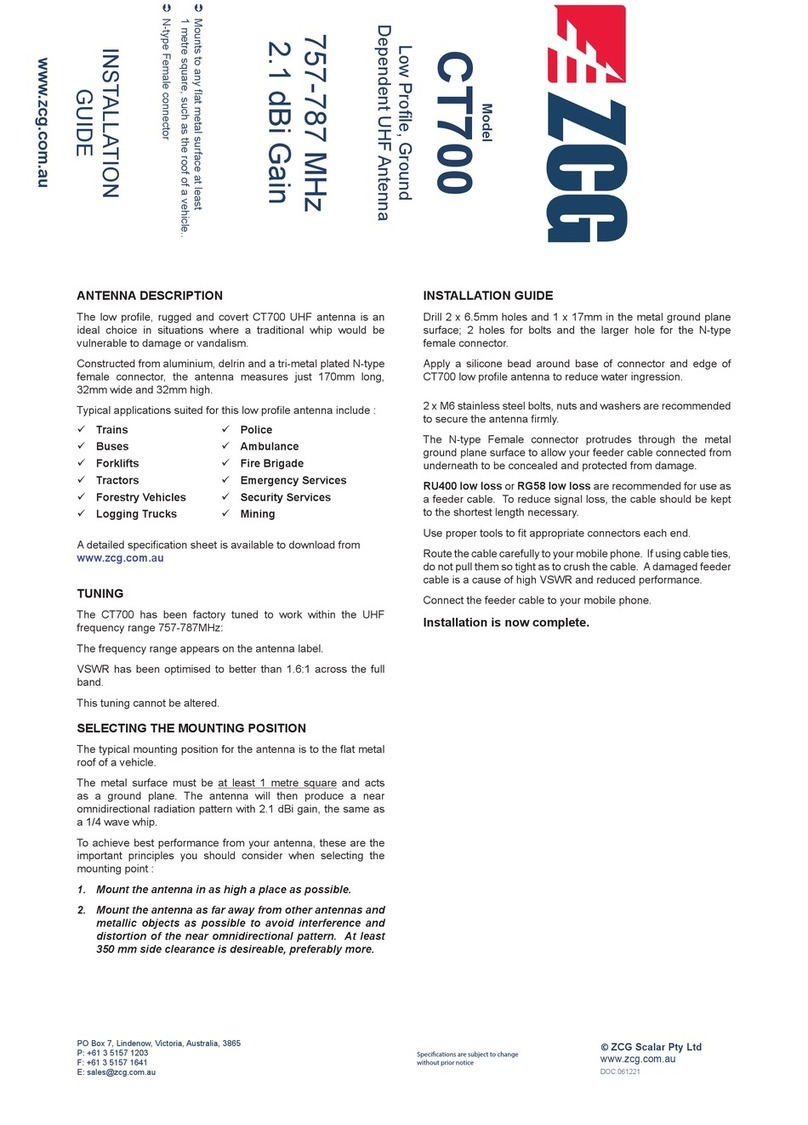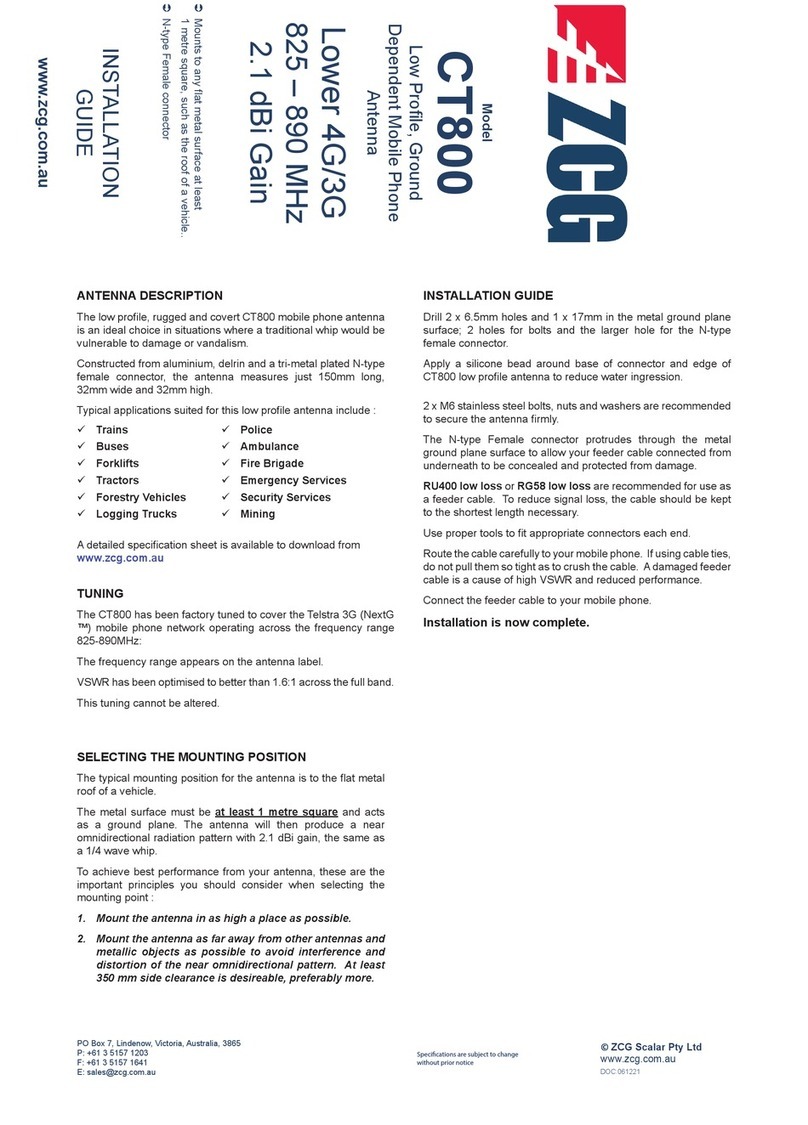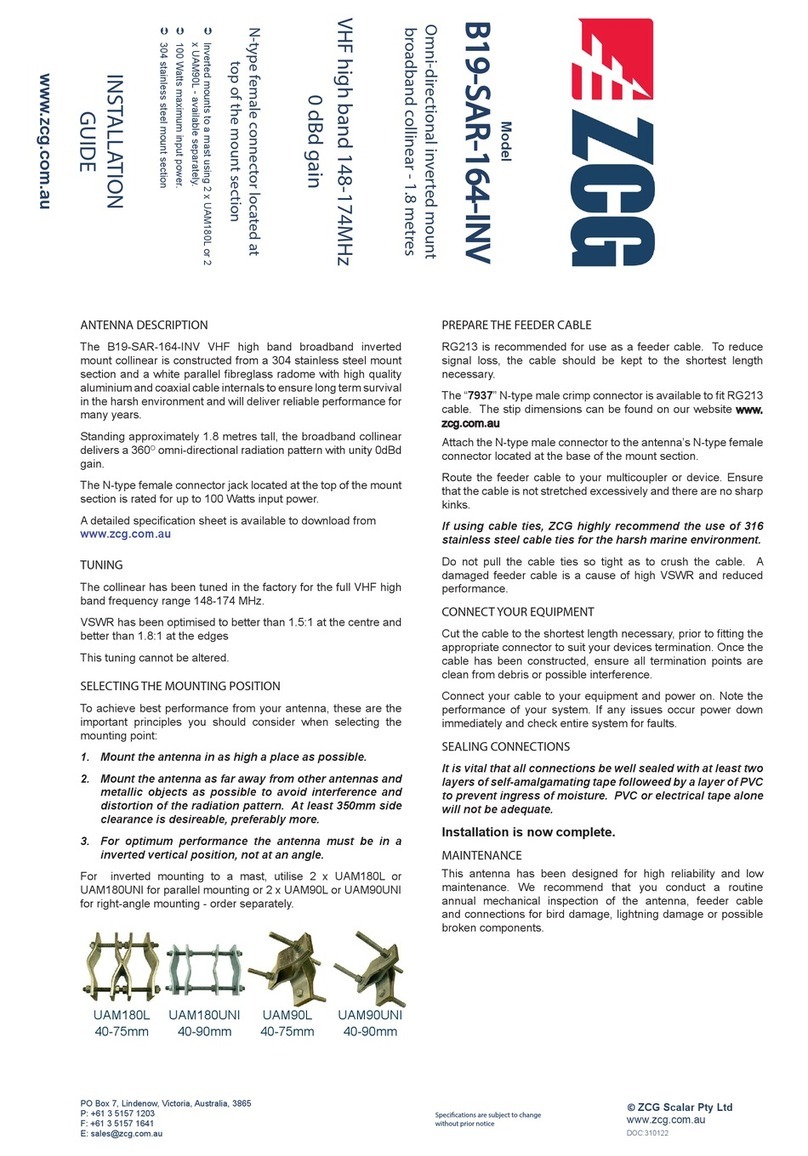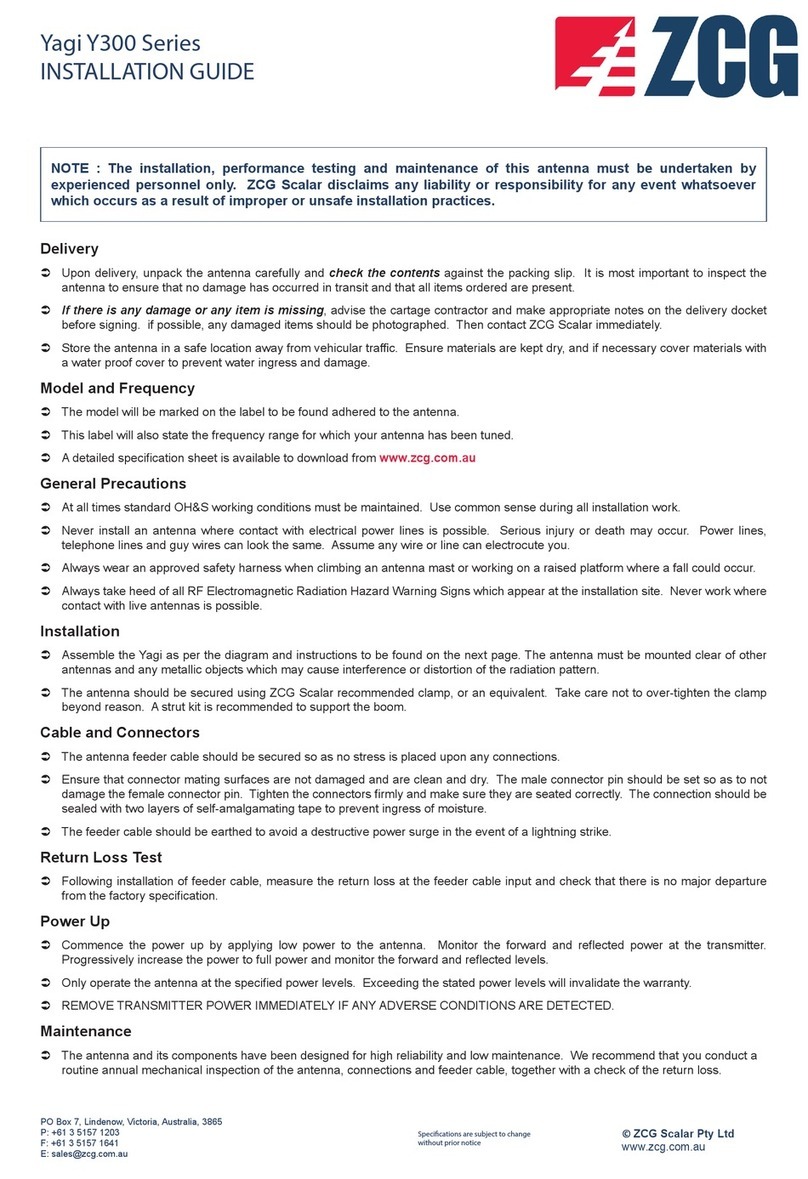CT700
Model
INSTALLATION GUIDE
Drill 2 x 6.5mm holes and 1 x 17mm in the metal ground plane
surface; 2 holes for bolts and the larger hole for the N-type
female connector.
Apply a silicone bead around base of connector and edge of
CT700 low profile antenna to reduce water ingression.
Low Profile, Ground
Dependent UHF Antenna
INSTALLATION
GUIDE
www.zcg.com.au
Mounts to any flat metal surface at least
1 metre square, such as the roof of a vehicle..
N-type Female connector
Trains
Buses
Forklifts
Tractors
Forestry Vehicles
Logging Trucks
Police
Ambulance
Fire Brigade
Emergency Services
Security Services
Mining
A detailed specification sheet is available to download from
www.zcg.com.au
ANTENNA DESCRIPTION
The low profile, rugged and covert CT700 UHF antenna is an
ideal choice in situations where a traditional whip would be
vulnerable to damage or vandalism.
Constructed from aluminium, delrin and a tri-metal plated N-type
female connector, the antenna measures just 170mm long,
32mm wide and 32mm high.
Typical applications suited for this low profile antenna include :
TUNING
The CT700 has been factory tuned to work within the UHF
frequency range 757-787MHz:
The frequency range appears on the antenna label.
VSWR has been optimised to better than 1.6:1 across the full band.
This tuning cannot be altered.
757-787MHz
2.1 dBi Gain
2 x M6 stainless steel bolts, nuts and washers are recommended
to secure the antenna firmly.
The N-type Female connector protrudes through the metal
ground plane surface to allow your feeder cable connected from
underneath to be concealed and protected from damage.
RU400 low loss or RG58 low loss are recommended for use as
a feeder cable. To reduce signal loss, the cable should be kept
to the shortest length necessary.
Use proper tools to fit appropriate connectors each end.
Routethecablecarefullytoyourmobilephone. Ifusingcableties,
do not pull them so tight as to crush the cable. Adamaged feeder
cable is a cause of high VSWR and reduced performance.
Connect the feeder cable to your mobile phone.
Installation is now complete.
SELECTING THE MOUNTING POSITION
The typical mounting position for the antenna is to the flat metal
roof of a vehicle.
The metal surface must be at least 1 metre square and acts
as a ground plane. The antenna will then produce a near
omnidirectional radiation pattern with 2.1 dBi gain, the same as
a 1/4 wave whip.
To achieve best performance from your antenna, these are the
important principles you should consider when selecting the
mounting point :
1. Mount the antenna in as high a place as possible.
2. Mount the antenna as far away from other antennas and
metallic objects as possible to avoid interference and
distortion of the near omnidirectional pattern. At least
350 mm side clearance is desireable, preferably more.












